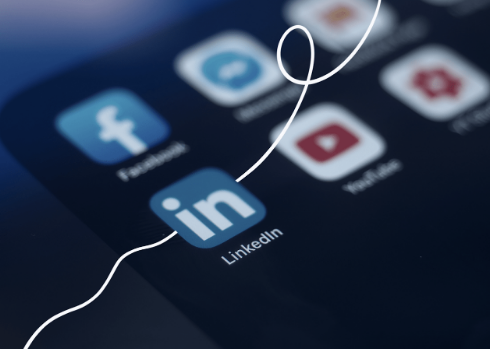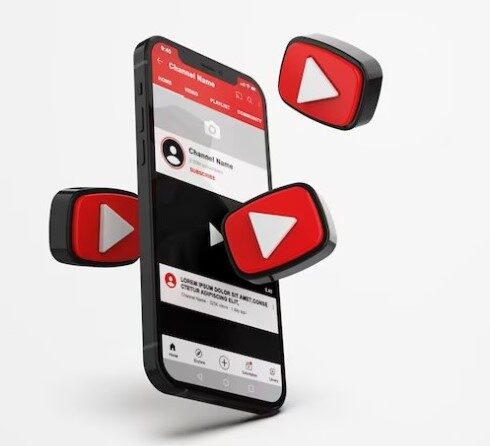Social Media is useful for empowering Healthcare
Media
Social media can greatly influence healthcare among the masses. Social networks have not only become a place for getting connected for Millenials, but also a source for getting a lot of health-related information. Almost 90% of older adults use social media to seek and share health information.
It’s difficult to manage the challenges of social media in healthcare. Government, agencies, health officials, and brands need to create engaging social content that is informative, quick, and accurate. Moreover, you also need to follow all relevant industry rules and regulations.
Let’s discuss the benefits of using social media in healthcare.
- Raising Awareness
It’s incumbent on healthcare authorities to provide important information on the pandemic, virus, and vaccine,s, etc. At present, the entire world is in the grip of one of the deadliest pandemics, making the role of health authorities more important than in normal times.
Social media plays a crucial role in raising awareness about routine health practices to be followed and addressing common healthy living concerns.
Social media is one of the most important sources to make people aware of the latest health issues, guidelines, and advisories, especially during a pandemic when circumstances are fast changing. And one of the most effective ways to do that is by sharing information directly in your social posts.
Besides, one can also use social media to direct followers to reliable sources of information by directing them to your website, or to government health social accounts.
Social media is often used for spreading false healthcare claims. Therefore, raising awareness through trusted sources makes it convenient for your followers to differentiate between false and authentic updates.
- Fights misinformation
Social media is undoubtedly the most effective tool in quickly spreading information among various groups of people. It’s very useful if the information is authentic, helpful, and clear. Unfortunately, there’s also a deluge of misinformation and fake news on various social networks.
Sometimes such misinformation is widely shared among users in the form of untrue statements attributed to well-known medical institutions and research centers.
But such claims can be easily debunked by citing published research or the latest information from reputed institutions like ICMR, MCI, CDC, or WHO. Moreover, this information can also be counter-checked through their official websites.
It’s very common for the perpetrators of such misinformation to use a reputable institution’s name to give the credibility of their statements. Therefore, it’s also the responsibility of the institution named as a reference to educate people and let them know the truth.
- Crisis Management
Social media has now replaced newspapers as the main source of getting news and updates. Now, most of the people who use different social media channels like Facebook, Instagram, Twitter, Linked In or Connected India get their news feeds on the app itself. This puts them in the key position to share breaking information.
As the second wave of COVID-19 hit the world in March this year, people turned to government health officials for updates. They were seeking the latest information and instructions from a reliable source.
In Canada, provincial medical health officers have successfully used social media and healthcare communication to spread awareness about the new variant of coronavirus They were very prompt in sharing official updates and restrictions during this time of crisis.
Often a reliable and consistent voice is a critical resource during the time of crisis. Live videos on social media channels also play an important role in educating people. It also comes as a blessing for those who don’t have access to TV news to be aware of announcements in real-time.
Monitoring Health Services
People generally post almost everything online, including their state of health. Hashtags such as #Flu, #Covid19, #NDPH, and #LCSM can reveal when diseases are appearing in new locations. Government health organizations can also get a fair idea about the severity of symptoms.
Usually, social media has an advantage over traditional data sources, including real-time data, accessibility, and lower cost. Social media has enabled us to ask, and answer, questions we never thought we could.
Pepple’s engagement
It’s not easy to talk about healthcare issues, even with doctors. This is especially true for gynecological problems of women or sexual diseases that are considered private and are quite embarrassing to discuss. This will definitely act as a big hurdle in the way of effective care.
In the US, as per the survey done by the American Sexual Health Association (ASHA), last year only 12% of young people were tested for sexually transmitted diseases. But in reality, more than 50% of STDs affect those between the age group of 15 and 24.
To encourage this age group to go for STD testing as a part of routine healthcare, ASHA created a social media marketing campaign. It included a social video in which comedian Whitney Cummings was seen talking to college students about sexual health.
The video went viral with more than 3.6 million views in 10 weeks and drove a large number of visitors to the campaign’s clinic locator. This proved how social media can be successfully used to convince the target audience to take real action.






